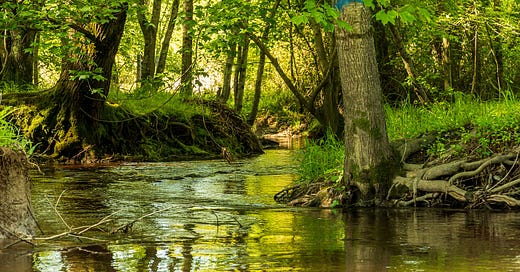Property Owners Obstructing Flood Prevention Discussed at Florida Meeting
Property owners' resistance to letting the Department of Public Works remove debris from their property poses flood risks, say Village of Florida officials.
By Chuck Dill
A focal point of the July 3 Village of Florida board meeting was how the Florida Department of Public Works is attempting to work with home owners along Brown’s Creek and Quaker Creek to remove debris that has accumulated in portions of these two creeks to avoid flood damage during times of heavy rain. These are the two primary drainage streams in the village.
The issue of access to private property along both sides of Brown’s Creek and Quaker Creek is a potential problem unless worked out with various property owners, as Village Attorney Elizabeth Cassidy and Village officials discussed at the meeting. The discussion will continue between the Village and the property owners, and the outcomes may not be made public for a while. If this issue is not worked out before a flooding rainfall, an emergency situation may override access issues, forcing the town to get in and do the required work.
Several years ago a significant flooding issue occurred where Maple Ave. was obstructed, and water covered the area from Roe’s Hardware to the corner. Such events are what Village officials worry about.
Brown’s Creek runs from Glenmere Pond, down through a Black Dirt section, under Randall Avenue and down under Rte. 17K, eventually draining into the Black Dirt region located to the west of Florida. Quaker Creek starts to the south of town on the west side of Main Street, continuing under the Cedarcrest culvert, under Bridge Street, past the Florida Village cemetery and parallel to Maple Avenue, past Roe’s Hardware and on out into the Black Dirt where it joins with Brown’s Creek.
Several areas of both creeks have been observed by the DPW to have collections of debris which are likely to cause flooding during significant rainfall events. Large areas of both creeks’ banks have residential or commercial properties abutting the banks. The problem for the DPW is in gaining access to the stream banks as needed to remove larger debris such as trees and other similarly large heavy debris.
In some areas, access is relatively easy, but in others, the adjacent land on the residential or commercial property must be accessed with heavier equipment. The DPW has to get land owner permission to access the property to clean the creeks and remove the debris.
The town is currently working with the various land owners to develop plans for access to the properties. In some cases, the property owners apparently have declined to allow the DPW access to the property. If the property owner wants to adequately clean up their own land along and in the creek, that would be fine. But complications arise when the property owners don’t want to provide access and are not willing or able to do the remediation themselves.
Village officials noted that there is a likelihood that a property owner who would not cooperate with the village and whose land is included an area that could be shown to have led to flooding and damage of other people’s property may be liable for the cost of remediation of that damage.
Working out access to and remediation of these debris-laden properties prior to the next major rain event is a key priority of the DPW.
Community focused news can only succeed with community support. Please consider the various subscription levels.


